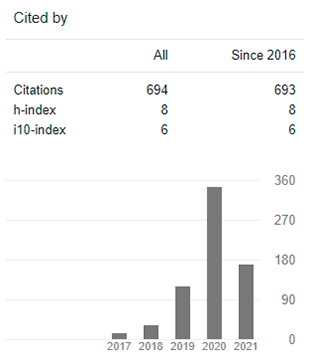Inclusive and Intercultural Practices for Students who have just arrived from other Countries to Cataluña
DOI:
https://doi.org/10.29394/Scientific.issn.2542-2987.2019.4.14.8.163-181Keywords:
intercultural education, communities, learning, foreign studentsAbstract
In this article, fragments about an investigation of educational practices in relation to Inclusive and Intercultural Education will be presented. Specifically, the objective of the research is to identify and compare the inclusive and intercultural practices of two centers: a Center for Infant and Primary Education (CEIP) and a Community for Infant and Primary Learning. Both are located in a small town in the Province of Barcelona. In accordance with the aforementioned purpose, an attempt will be made to highlight the comparison between the two centers, in which inclusive and intercultural practices are applied with newly arrived students from other countries. The methodology that was used was descriptive-comprehensive and put into practice from an ethnographic perspective through two information collection techniques in the centers: interviews on the one hand and analysis of official documents on the other. Significant results have been obtained, given that the Learning Community stands out for the type of inclusive education it employs, while, on the other hand, the other school does not follow any methodology or intervention in particular, reflecting the lack of inclusive practices and intercultural.
Downloads
References
Aguado, T., Gil, I., & Mata, P. (2005). Educación intercultural: una propuesta para la transformación de la escuela. ISBN: 978-84-831-9243-6. Madrid, España: Editorial Los Libros de la Catarata.
Arnaiz, P. (2012). Escuelas eficaces e inclusivas: cómo favorecer su desarrollo. Educatio Siglo XXI, 30(1), 25-44, e-ISSN: 1989-466X. Recuperado de: https://revistas.um.es/educatio/article/view/149121
Borrero, R. (2012). Educación para todos y todas. Análisis del modelo educativo-social para una educación intercultural. Educatio Siglo XXI, 30(2), 333-364. e-ISSN: 1989-466X. Recuperado de: https://revistas.um.es/educatio/article/view/160851
Carbonell, F. (2006a,b). L’acollida, acompanyament d’alumnat nouvingut. Barcelona, España: Eumo Editorial.
Dorio, I., Massot, I., & Sabarierog, M. (2004). Métodos de Investigación Cualitativa. En Bisquerra, R. (coord.). Metodología de la Investigación Educativa. Madrid, España: Editorial La Muralla.
Escarbajal, A. (2014). La educación intercultural en los centros educativos. Revista Electrónica Interuniversitaria de Formación del Profesorado (REIFOP), 17(2), 29-43, e-ISSN: 1575-0965. Recuperado de: https://doi.org/10.6018/reifop.17.2.197291
Essomba, M. (2006a,b). Liderar escuelas interculturales e inclusivas. Barcelona, España, Editorial Graó.
Garreta, J. (2011). La atención a la diversidad cultural en Cataluña: exclusión, segregación e interculturalidad. Revista de Educación, 355, 213-233. e-ISSN: 0034-8082. Recuperado de: http://repositori.udl.cat/bitstream/handle/10459.1/44526/re355_09.pdf?sequence=1&isAllowed=y
Márquez, E., García-Cano, M., Antolínez, I., Cid, R., González, E., Guzmán, R., & Molina, J. (2012). Educación intercultural y comunidades de aprendizaje. ISBN: 978-84-8319-724-0. España: Editorial Los Libros de la Catarata.
Pérez, M. (2016). La Educación Intercultural. Revista Scientific, 1(2), 162-180, e-ISSN: 2542-2987. Recuperado de: https://doi.org/10.29394/scientific.issn.2542-2987.2016.1.2.10.162-180
Sabariego, M. (2009a,b,c). La educación intercultural como factor de cambio social: modelos de intervención y acción educativa. En M. Esteban (Ed.), El diálogo intercultural en España: un requisito de la educación y cultura de paz, págs. 193-264. Madrid, España: MEC-CIDE.
Downloads
Published
How to Cite
Issue
Section
License
Copyright (c) 2019 INDTEC, C.A.

This work is licensed under a Creative Commons Attribution-NonCommercial-ShareAlike 4.0 International License.
The content of the journals of this site, are under a Creative Commons Attribution-Noncommercial-Share Alike 4.0 International License.













